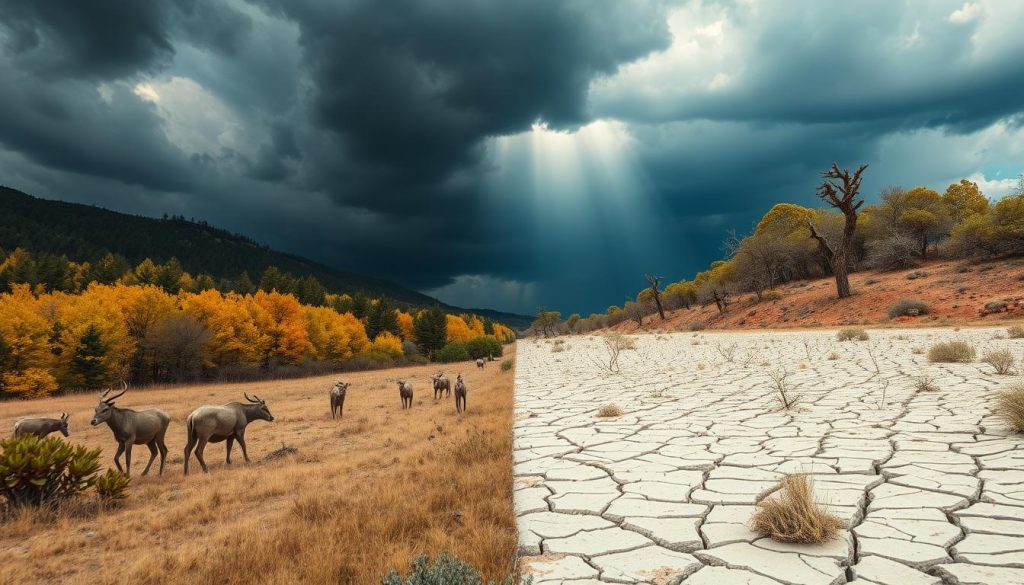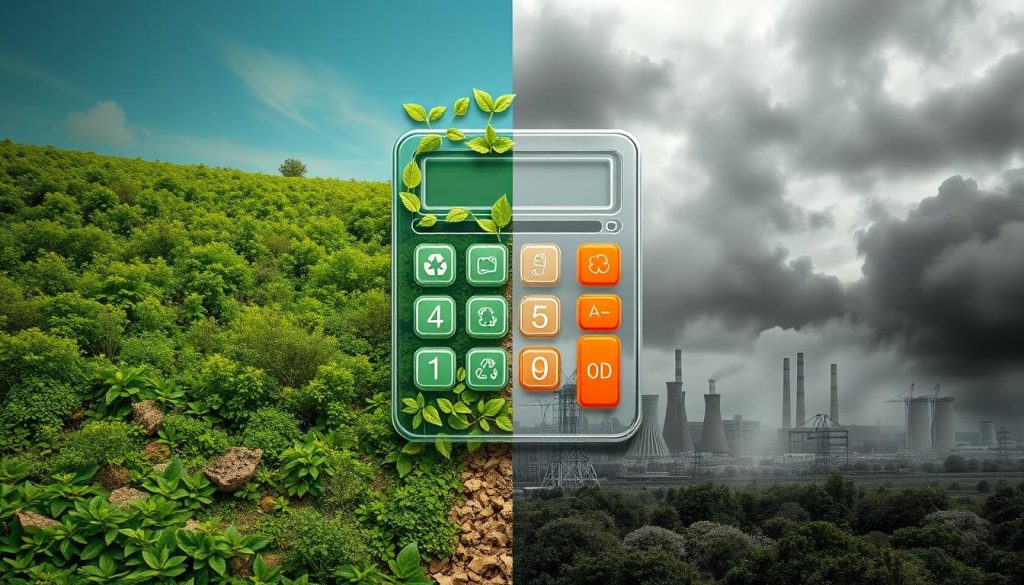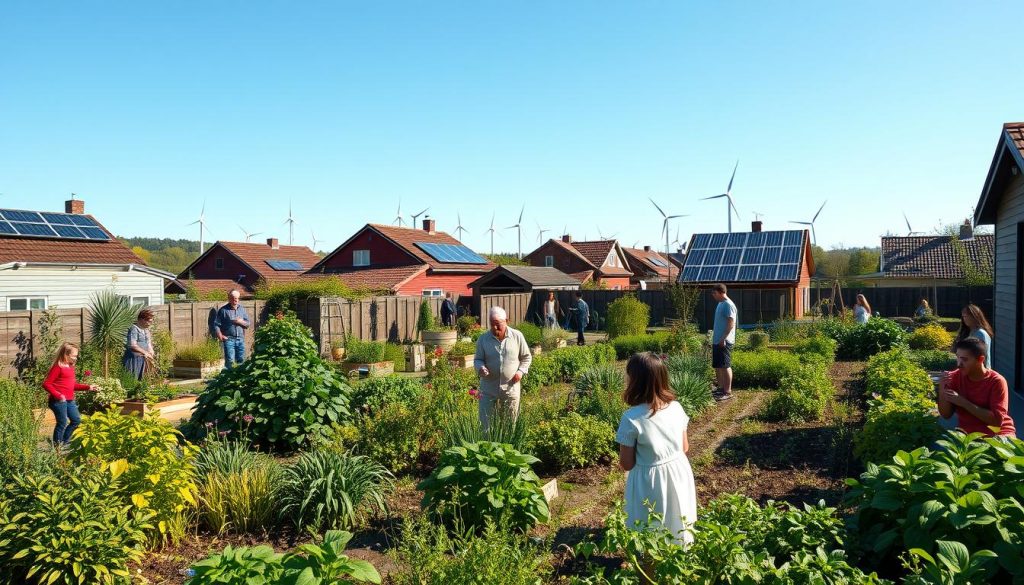I’ve always been fascinated by how our actions affect the world around us. As I dive into the topic of environmental impact, I’m struck by its importance in shaping our planet’s future. It’s not just about big changes; even small choices we make every day play a role in sustainability and climate change.
In this article, I’ll explore how we’re influencing our environment and what it means for Earth’s health. From the air we breathe to the energy we use, everything connects to our planet’s wellbeing. Let’s uncover the ways we can make a positive difference and ensure a healthier world for generations to come.
The Essence of Environmental Impact
Environmental impact shapes our world in countless ways. Every action we take leaves a mark on our planet. From the food we eat to the energy we use, it all adds up to create significant changes in our ecosystems.
Defining Environmental Impact in Simple Terms
Environmental impact refers to how human activities affect the natural world. It’s the footprint we leave on Earth’s air, water, land, and living creatures. Think of it as the ripple effect our choices create in nature’s delicate balance.
Why Understanding Environmental Impact Matters
Grasping environmental impact is crucial for our future. It helps us make informed decisions about sustainability and eco-friendly practices. By understanding our influence, we can work towards preserving our planet for generations to come.
Key Factors Contributing to Environmental Change
Several elements play a role in environmental change:
- Pollution from industries and vehicles
- Deforestation and habitat destruction
- Overconsumption of natural resources
- Climate change due to greenhouse gas emissions
- Waste production and improper disposal
By recognizing these factors, we can take steps towards more sustainable living. Every small action counts in reducing our environmental impact and creating a healthier planet for all.
Climate Change: The Global Challenge

Climate change is changing our world fast. I’ve seen how rising temperatures hurt communities in the United States. From California’s droughts to Florida’s hurricanes, the damage is clear.
Global warming, caused by greenhouse gases, is the main problem. Our use of fossil fuels has raised carbon dioxide levels. This heat traps and messes up weather everywhere.
- Rising sea levels threaten coastal cities
- More frequent and intense heatwaves
- Disruption of ecosystems and loss of biodiversity
- Increased risk of wildfires and extreme weather events
We must act fast to face this global issue. Cutting emissions is key. We need to use more renewable energy, save energy, and change how we consume things.
| Action | Potential Impact |
|---|---|
| Switch to renewable energy | Reduce CO2 emissions by 70% |
| Improve energy efficiency | Cut energy use by 30% |
| Sustainable transportation | Lower transport emissions by 40% |
| Reforestation | Absorb 25% of current CO2 emissions |
By doing these things, we can lessen climate change’s harm. We can make a better future for all.
Carbon Footprint: Measuring Our Individual Impact

I’ve often wondered about my personal impact on the environment. It turns out, understanding our carbon footprint is key to making positive changes. Let’s explore this concept and learn how we can make a difference.
What Is a Carbon Footprint?
A carbon footprint measures the total greenhouse gas emissions caused by an individual, event, organization, or product. It’s expressed as carbon dioxide equivalent. This includes activities like transportation, home energy use, and consumption habits.
Calculating Your Personal Carbon Footprint
To figure out my carbon footprint, I use online calculators. They consider my energy usage, travel habits, and diet. These tools help me identify areas where I can reduce my environmental impact.
| Activity | Average Annual CO2 Emissions (tons) |
|---|---|
| Driving a car | 4.6 |
| Home energy use | 7.5 |
| Air travel | 2.5 |
| Food consumption | 3.0 |
Strategies to Reduce Your Carbon Footprint
After calculating my footprint, I focus on reducing my emissions through simple changes:
- Using public transportation or biking instead of driving
- Improving home energy efficiency with LED bulbs and better insulation
- Eating more plant-based meals and reducing food waste
- Supporting businesses committed to sustainability
By making these small adjustments, I’m working towards a more sustainable lifestyle. I’m doing my part to combat climate change.
Pollution: Types and Consequences
Pollution is a big problem that harms our planet. It’s important to know about its different types and effects. This knowledge helps us work better to protect our environment.
Air pollution comes from factories, cars, and burning fossil fuels. It causes breathing problems and helps make the climate change. Water pollution happens when harmful substances get into our water bodies. This hurts fish and makes water unsafe for us to drink.
Soil pollution comes from throwing away waste and using harmful chemicals in farming. It makes the land less fertile and affects how much food we can grow.
Pollution has many bad effects on our environment. It messes up ecosystems, harms animals, and reduces biodiversity. It also makes people sick and costs a lot of money.
| Pollution Type | Main Sources | Key Consequences |
|---|---|---|
| Air | Industrial emissions, vehicle exhaust | Respiratory issues, climate change |
| Water | Industrial waste, agricultural runoff | Harm to aquatic life, unsafe drinking water |
| Soil | Improper waste disposal, pesticides | Reduced soil fertility, contaminated crops |
To fight pollution, we need to do many things. We should make laws stricter, use clean technology, and live more sustainably. Every person can help by throwing away less and choosing green products. Together, we can lessen pollution’s harm and keep our planet healthy.
Sustainability: Building a Greener Future

I believe sustainability is key to creating a better world. It’s about meeting our needs without harming future generations. Let’s explore how we can all contribute to a more eco-friendly future.
Principles of Sustainability
Sustainability has three pillars: environmental protection, social responsibility, and economic viability. These principles guide our choices for green living. They also help businesses adopt eco-friendly practices.
- Conserve natural resources
- Reduce waste and pollution
- Promote social equity
- Support local economies
Sustainable Practices in Everyday Life
Small changes in daily habits can make a big difference. Here are some ways to embrace sustainability at home:
- Use reusable bags and containers
- Choose energy-efficient appliances
- Compost food scraps
- Opt for public transport or carpooling
Corporate Sustainability Initiatives
Many companies are stepping up their sustainability game. They’re implementing green strategies to reduce their environmental impact. This promotes eco-friendly business practices.
| Company | Sustainability Initiative | Impact |
|---|---|---|
| Patagonia | Recycled materials in clothing | Reduced waste and resource consumption |
| IKEA | Sustainable wood sourcing | Preserved forests and biodiversity |
| Tesla | Electric vehicle production | Decreased carbon emissions |
By embracing these sustainability principles and practices, we can all contribute to building a greener future for our planet.
Renewable Energy: Powering a Cleaner World
I’m excited to share how renewable energy is changing our world. As we face climate change, clean power sources offer hope. Solar panels, wind turbines, and hydroelectric dams are becoming common sights in the U.S.
Renewable energy comes from natural sources that replenish themselves. Unlike fossil fuels, these sources don’t run out and produce less emissions. This shift towards cleaner energy is key for reducing our carbon footprint and fighting global warming.
The growth of renewable energy in recent years has been remarkable. Let’s look at some key statistics:
| Energy Source | U.S. Electricity Generation (2020) | Growth Rate (2010-2020) |
|---|---|---|
| Solar | 2.3% | 84% annually |
| Wind | 8.4% | 15% annually |
| Hydropower | 7.3% | 1% annually |
These numbers show the fast adoption of renewable energy sources. As technology gets better and costs drop, we can expect this trend to keep going. The shift to clean energy is not just good for the environment; it’s also creating jobs and boosting the economy.
By embracing renewable energy, we’re taking a big step towards sustainability. Every solar panel and wind turbine we add brings us closer to a world powered by clean, endless sources. It’s an exciting time to be part of this energy revolution!
Conservation: Protecting Our Natural Resources
Conservation is key to keeping our planet healthy. It’s vital to protect biodiversity to keep ecosystems balanced. By saving different plants and animals, we help our environment stay strong against dangers.
The Importance of Biodiversity
Biodiversity is essential for life on Earth. It gives us food, medicine, and clean air. A variety of species helps ecosystems adapt and recover from problems. Losing biodiversity can harm our planet greatly.
Conservation Efforts Around the Globe
Global conservation efforts are helping. They protect rainforests and create marine reserves. These actions aim to save habitats and species. Many countries have set up national parks and wildlife sanctuaries to protect their unique places.
| Conservation Area | Location | Key Species Protected |
|---|---|---|
| Great Barrier Reef Marine Park | Australia | Coral reefs, sea turtles, dugongs |
| Serengeti National Park | Tanzania | Lions, elephants, wildebeest |
| Amazon Rainforest | South America | Jaguars, sloths, macaws |
How You Can Contribute to Conservation
I’ve found ways to help conservation in my area. By reducing my impact on the environment, I support natural resources. Here’s what I do:
- Planting native species in my garden to support local wildlife
- Reducing single-use plastics to minimize pollution
- Supporting local conservation organizations through volunteering or donations
- Educating others about the importance of biodiversity and conservation
Every small action helps in the fight to protect our planet’s resources and biodiversity.
Eco-Friendly Living: Small Changes, Big Impact
I’ve found that living eco-friendly is all about the little things. Simple choices like using reusable bags and water bottles make a big difference. These small steps lead to a greener lifestyle.
Green living isn’t just about recycling. I’ve started composting kitchen scraps, which helps the environment and my garden. Using energy-efficient appliances and LED bulbs also saves money and reduces carbon emissions. These changes prove that being green is good for both the planet and our wallets.
What I love most about eco-friendly living is the community it builds. I’ve joined local clean-up events and met others who care about our planet. We share tips and motivate each other to keep making a difference. Together, we can have a significant impact on our community and the world.

